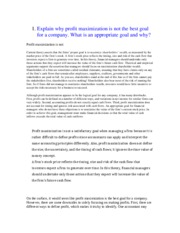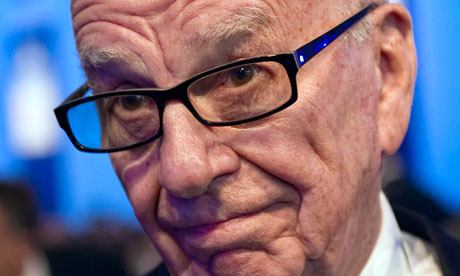Contents:
- Bank of Japan jolts markets in surprise change to yield curve policy
- The Outlier: BOJ Retains Easy Policy, Defies Global Tightening Tide
- and access global financial markets
- Japan Interest Rate Decision
- Go green, earn green: India’s 1st Green Credit scheme to reward eco-friendly actions by individuals, industries


Initially, the measure would affect roughly 10 trillion yen (about $88 billion) in bank funds, about 4 percent of all deposits at the BoJ. The measure, announced on January 29 by the BoJ, applies a negative interest rate of minus 0.1% to deposits that Japanese financial institutions place at the BoJ. “In that sense, the euro is one of the very few currencies that can offer this combination at the moment.” The common currency has been buoyed by expectations the European Central Bank still has more to go in raising interest rates, in contrast with a dovish repricing of its U.S. counterpart. But Kuroda said wage growth will likely increase gradually due to intensifying labour shortages and structural changes in Japan’s job market, which are leading to higher pay for temporary workers and a rise in the number of permanent workers. Taking some steam out of the dollar and the breathless advance in U.S. yields were comments from Atlanta Fed President Raphael Bostic overnight that “slow and steady is going to be the appropriate course of action,” despite new labour figures adding to the run of strong data of late.

“So the implications of the move will play out over the next few days or even next couple of weeks. But yes, at the margin, it does add to the whole story that globally, central banks are tightening policy.” The Bank of Japan kept monetary policy steady and took a more upbeat view of the economy on Tuesday, reinforcing market expectations that its future policy direction could be an increase – not a cut – in interest rates. Japanese stocks closed higher on Monday, with the yen a touch weaker, on hopes the global economy could hold up in the face of high inflation and interest rates, but moves were modest ahead of Bank of Japan Governor Kazuo Ueda’s first news conference.
Reflecting a pick-up in emerging Asian demand and factory output, the central bank upgraded its language to signal its confidence that the economy is headed for a steady recovery. “The timing of the policy tweak is a surprise, though we have been expecting the move to come in 2Q 2023. “They’ve widened the band, and I guess that came earlier than expected. It raises questions as to whether this is a precursor of more to come, in terms of policy normalisation. “They have these two bazookas left – removing the YCC and bringing interest rates up, even possibly to positive territory. There are huge bazookas that would move the yen strongly. “It came as a surprise, but if the decision was delayed into next year, might not be able to make such a move as the economy is set to worsen.
Japan’s elevated inflation and the illiquidity of its bond market are fueling bets for a change despite Ueda’s insistence at his inaugural news conference that it’s to stand pat. The Bank of Japan’s statement on its decision on Tuesday didn’t mention inflation as a reason to let the yield on government bonds rise as high as 0.5 per cent, According to WSJ. Instead, it cited the deteriorating functioning of the government bond market and discrepancies between the 10-year government bond yield and the yield on bonds with other maturities. As widely expected, the BOJ kept unchanged its pledge to guide short-term rates at minus 0.1 percent and the 10-year government bond yield around zero percent.
Beyond the main event of the Fed meeting, investors will also focus on ISM manufacturing and job opening data due on Wednesday that will further highlight the state of U.S. economy and labour market. Investor attention this week will also be on the monetary path taken by European Central Bank and Bank of England, each of which is expected to raise interest rates by 50 bps on Thursday. That in turn has led to some market expectations the BOJ may raise its target for the 10-year JGB yield, which briefly hit 0.1 percent last week, as early as next year.
Bank of Japan jolts markets in surprise change to yield curve policy
The BOJ said the yield on the 10-year Japanese government bond could rise as high as 50 bps from a previous cap of 25 bps. The central bank has set a target range around zero for the benchmark government bond yield since 2016 and used that as a tool to keep overall market interest rates low, according to the WSJ article. The negative interest rate announcement is the first time for BOJ and was a 5-4 close tie in favour of negative interest rates with Quantitative and Qualitative Monetary Easing . It comes in the wake of weak data on the economic front especially as inflation seemed to be on the lower side (0.5%) nowhere close to the target set by BOJ of 2 percent despite the BOJ’s monetary stimulus over the past some time now. Also consumer spending in December dropped 4.4 percent as compared to a year earlier which is also seen as a key reason behind the latest decision.
BOJ seen sticking to ultra-low rates, defy global rate hike rush – Reuters
BOJ seen sticking to ultra-low rates, defy global rate hike rush.
Posted: Mon, 19 Sep 2022 07:00:00 GMT [source]
Underscoring its alarm over recent sharp yen falls, the BOJ included in the report a rare warning that “sharp volatility” in the currency market was among risks to Japan’s economy. The bank said Tuesday’s moves would “facilitate the transmission of monetary-easing effects,” suggesting it didn’t want the decision to be interpreted as monetary tightening. The Nikkei Stock Average, which had been slightly higher in the morning, was down more than 2 per cent as investors digested the possibility that companies would have to pay higher interest on their debt, according to the WSJ article. Also, the weak yen has pushed up profits for many exporters, so a stronger yen could be negative for stocks. The 10-year yield, which had been stuck around 0.25 per cent for months because of the central bank cap, quickly moved up to 0.40 per cent in afternoon trading, according to WSJ. The BOJ also said it would increase monthly purchases of Japanese government bonds to 9 trillion yen ($67.5 billion) per month from the previous 7.3 trillion yen.
The Outlier: BOJ Retains Easy Policy, Defies Global Tightening Tide
Last time when the BOJ widened the 10-year bond yield target band to 0.5% in December, the only sector that rose on the news was banks, which were seen to benefit from the move due to the prospect of interest rate margin improvement. With his comment indicating that the BOJ is not in a hurry to change its yield curve control policy, bank stocks may come under pressure.” The Japanese yen fell on Friday after the Bank of Japan stood pat on its ultra-easy monetary policy, while the U.S. dollar was on track for a second straight monthly loss. In a closely watched decision, the BOJ on Friday announced it will maintain ultra-low interest rates, as expected, and made no tweaks to its yield curve control by a “unanimous vote”. The Bank of Japan on Friday kept ultra-low interest rates, but announced a broad review of its monetary policy, laying the groundwork for new Governor Kazuo Ueda to phase out his predecessor’s massive stimulus programme. As widely expected, the BOJ made no changes to its yield curve control policy that sets a short-term interest rate target of -0.1% and that for the 10-year bond yield around zero.
- Another feature is that it comes post the resigning of the Economy Minister of Japan Akira Amari over allegations of bribery yesterday.
- Against a basket of currencies, the U.S. dollar index rose 0.1% to 101.55, though remained on track for a monthly loss of about 1%, after having fallen about 2.3% in March.
- “The Fed is widely expected to hike again next week but with inflation remaining sticky, we expect the Fed to stay on hold for the remainder of the year, dashing hopes of a policy pivot in ,” said analysts at Societe Generale.
- The yen surged and Asian shares fell sharply on Tuesday after the Bank of Japan’s decision to allow long term interest rates to rise more, a move analysts said could signal a step towards changing Japan’s long-held yield curve control.
There were even rumours the BOJ might hold an emergency meeting on Monday as it struggles to defend its new yield ceiling in the face of massive selling. For India and other economies, it means that the era of easy money is not over despite the Fed increasing rates once in the past year. With the Bank of Japan and ECB engaged in bond buying programs the era of easy money may well not be over. Over the next year, significant developments are in stock in the monetary policy space the world over. Narayan added that Japanese investors, who are big international investors, will likely withdraw some of the money from international markets and put them back into domestic markets, because the opportunities may start to look a bit more attractive for them domestically.
In a https://1investing.in/ move, the BOJ on Tuesday decided to let long-term yields move 50 basis points either side of its 0% target, wider than the 25 basis point band previously, even as the central bank kept broad policy setting unchanged. The decision of conducting a broad-perspective review of monetary policy points to the chance of YCC reform next year, probably mid-2024.” TOKYO — The Bank of Japan shocked markets with an unexpected widening of its target band for interest rates, sparking a rally in the yen, pushing up bond yields. Japanese 10-year government bond yields topped the BOJ’s policy ceiling for a third straight session on Tuesday amid the speculation that policymakers could tweak stimulus settings. Wagers are in place for the BOJ to adjust its stance, months after it its yield cap to 0.5% in a surprise move that jolted global markets.
and access global financial markets
It raises questions as to whether this is a precursor of more to come, in terms of policy normalisation,” said Moh Siong Sim, currency strategist at Bank of Singapore. Since signs of labour market loosening were limited, the Fed would likely pair a smaller rate hike this week with hawkish communication, she said. “The U.S. dollar can in turn enjoy a brief rally if markets reassess their expectations for a quick FOMC pivot.” Financial markets are focusing on what BOJ Governor Haruhiko Kuroda will say at his post-meeting news conference about the recent rise in yields.
BOJ Interest Rate Guide: Market Retreats From Bets Ahead of Policy … – Bloomberg
BOJ Interest Rate Guide: Market Retreats From Bets Ahead of Policy ….
Posted: Wed, 20 Jul 2022 07:00:00 GMT [source]
But the central bank warned the impact of U.S. monetary policy on global markets was among risks to the outlook, suggesting that the Federal Reserve’s interest rate hike cycle could disrupt emerging market capital flows. A measure of inflation in the economy, the price index for gross domestic purchases, rose at a 3.8% pace after increasing at a 3.6% rate in the fourth quarter, while the core PCE price index jumped at a 4.9% rate after advancing at a 4.4% pace in the prior quarter. “The Fed is widely expected to hike again next week but with inflation remaining sticky, we expect the Fed to stay on hold for the remainder of the year, dashing hopes of a policy pivot in ,” said analysts at Societe Generale. However, the BOJ said it will remove forward guidance that pledges to keep interest rates at current or lower levels. “While no policy change is expected, the focus will be on the outlook/guidance and any potential review of the central bank’s longer-term performance and monetary policy settings,” said Anderson Alves, market analyst at ActivTrades.
Japan Interest Rate Decision
The spotlight, however, will be on Fed Chair Jerome Powell’s news conference as traders attempt to gauge how long the Fed is likely to stay hawkish. The US dollar is facing a second consecutive monthly loss, as investors speculate that the Federal Reserve may soon end its significant rate-hiking cycle. Meanwhile, the yen stabilised close to a one-week high on the day of the Bank of Japan’s monetary policy decision. Moreover, analysts suggest his tone will attract attention as investors listen out for any tone which suggests a tweak in forward guidance.
The Bank of Japan has slightly loosened the shackles on its 10-year yield target and said it will review the operation of its yield-curve control policy, surprising financial markets and sending the yen sharply higher. The Bank of Japan’s monetary policy decision on Friday takes centre stage in Asia, where expectations are for new BOJ Governor Kazuo Ueda to keep monetary settings ultra-loose at his debut policy meeting. Earlier on Friday, government data showed that core consumer prices in Japan’s capital, Tokyo, rose 3.5% in April from a year earlier, beating market forecasts in a sign of broadening inflationary pressure in the world’s third-largest economy. “This puts pressure on the BOJ, they might do something in the near future,” said Tina Teng, market analyst at CMC Markets. In the wider currency market, the U.S. dollar found some support from data pointing to still-sticky inflation in the United States, which reinforced expectations for a 25-basis-point rate hike at next week’s FOMC meeting..
European stocks fend off Fed rate hike risks, yen drops to 24-year low
“The BOJ must have been forced into action because the bond market functionality is almost dead. “The BOJ will keep on monitoring markets when making further moves as needed. But it is unlikely to shift policy automatically just because Governor Haruhiko Kuroda is replaced with someone else in April.” Data showed that U.S. retail sales fell more than expected in December, pulled down by declines in purchases of motor vehicles and a range of other goods.
Chinese data showed that the world’s second-biggest economy grew 2.9% in the fourth quarter of last year, beating expectations but underscoring the toll exacted by Beijing’s stringent “zero-COVID” policy. The 10-year Treasury note yield fell 0.8 basis points to 3.520 percent after posting their biggest intraday gain since March on Thursday as investors weighed the looming debt ceiling showdown in Washington. According to Taylor Nugent, an economist at National Australia Bank, the data showed “an unhappy combination” of slower-than-expected growth and higher-than-expected price increases in the first quarter. Nodding to a wave of companies raising prices, however, the BOJ said inflation expectations were heightening and likely to rise further including through wages hikes.
Go green, earn green: India’s 1st Green Credit scheme to reward eco-friendly actions by individuals, industries
The euro has been buoyed by 5 who are the main customers of the repo market the European Central Bank still has more to go in raising interest rates, in contrast with a dovish repricing of its U.S. counterpart. Data released on Thursday showed that while U.S. economic growth slowed more than expected in the first quarter, consumer spending, which was accompanied by a rise in inflation, accelerated. Analysts at TD Securities offer a brief preview of what they expect from Frday’s Bank of Japan monetary policy announcements, the first decision under. The bets set the stage for a showdown as are said to be wary of tweaking or scrapping their yield control stimulus at next week’s meeting. Policy makers are reluctant to act so soon after the banking crisis overseas clouded the outlook, according to people familiar with the matter. While rising fuel and commodity costs have pushed Japan’s inflation above its 2% target, the BOJ has repeatedly said it was in no rush to withdraw stimulus as slowing global growth cloud the outlook for the still-weak economy.
- Last week in an interview with Shekhar Gupta, on NDTV’s ‘Walk The Talk’, RBI Governor Raghuram Rajan had remarked that at present the central banks across the world are engaged in increasing asset prices with the hope that the underlying economic activity will match these increased prices.
- The US dollar is facing a second consecutive monthly loss, as investors speculate that the Federal Reserve may soon end its significant rate-hiking cycle.
- The dollar weakened against the Japanese yen on Tuesday amid expectations of a possible policy shift at the Bank of Japan, while stocks on Wall Street mostly fell following disappointing quarterly results from Goldman Sachs.
- Data also showed that initial claims for unemployment benefits fell, indicating that the labour market remains tight, which is a major driver of inflation.
“I think the move was certainly unexpected, to say the least. And dollar/yen just sold off sharply on the back of the YCC revision, and I think that does pave the way for a full abandonment of the YCC programme, and probably a pivot from the ultra-dovish monetary policy stance in the future.” “Today’s move reflects the BOJ’s determination not to alter its yield cure control policy. But the BOJ failed to communicate with markets, as it made no efforts to lay the ground or allow markets to factor in such a move. It came all of sudden so market players must be angry about the decision. It is the first time that the benchmark rate falls into negative territory in Japan, after data on Monday showed a contraction in the gross domestic product in the October-December quarter, showing the effects of a global deceleration on the Japanese economy, EFE news reported. It also maintained its policy guidance that pledges to ramp up stimulus as needed, and projecting that short- and long-term interest rates will move at “current or lower levels.” “I don’t expect the BOJ to change its monetary policy this tme, but the newly-released Tokyo CPI was higher than expected … I think this puts pressure on the BOJ, they might do something in the near future,” said Tina Teng, market analyst at CMC Markets.
The website will cater to all categories of investors and guide them to choose the right investment and trading products. Amamiya played a key role in drafting Kuroda’s asset-buying programme in 2013 and consistently called for keeping ultra-low interest rates. But he also said in July the BOJ must “always” think about the means of exiting ultra-loose monetary policy. The kiwi continued to draw some support from the Reserve Bank of New Zealand’s hawkish rate rise on Wednesday, after the central bank signalled further tightening ahead to tame high inflation. “Investors favour currencies that can offer both an ongoing domestic tightening cycle and still some room for a hawkish surprise at the coming meetings,” said ING analysts.

“The policy review is in line with our expectations for policy assessment. We still look for a removal of YCC regime, interest rate hike at some stage this year amid broadening inflationary pressures and upward pressure on wage growth in Japan.” The Bank of Japan on Friday kept monetary settings unchanged, but revamped its guidance on the future path of policy, and decided to conduct a “broad-perspective” review of its monetary policy. The dollar weakened against the Japanese yen on Tuesday amid expectations of a possible policy shift at the Bank of Japan, while stocks on Wall Street mostly fell following disappointing quarterly results from Goldman Sachs.
